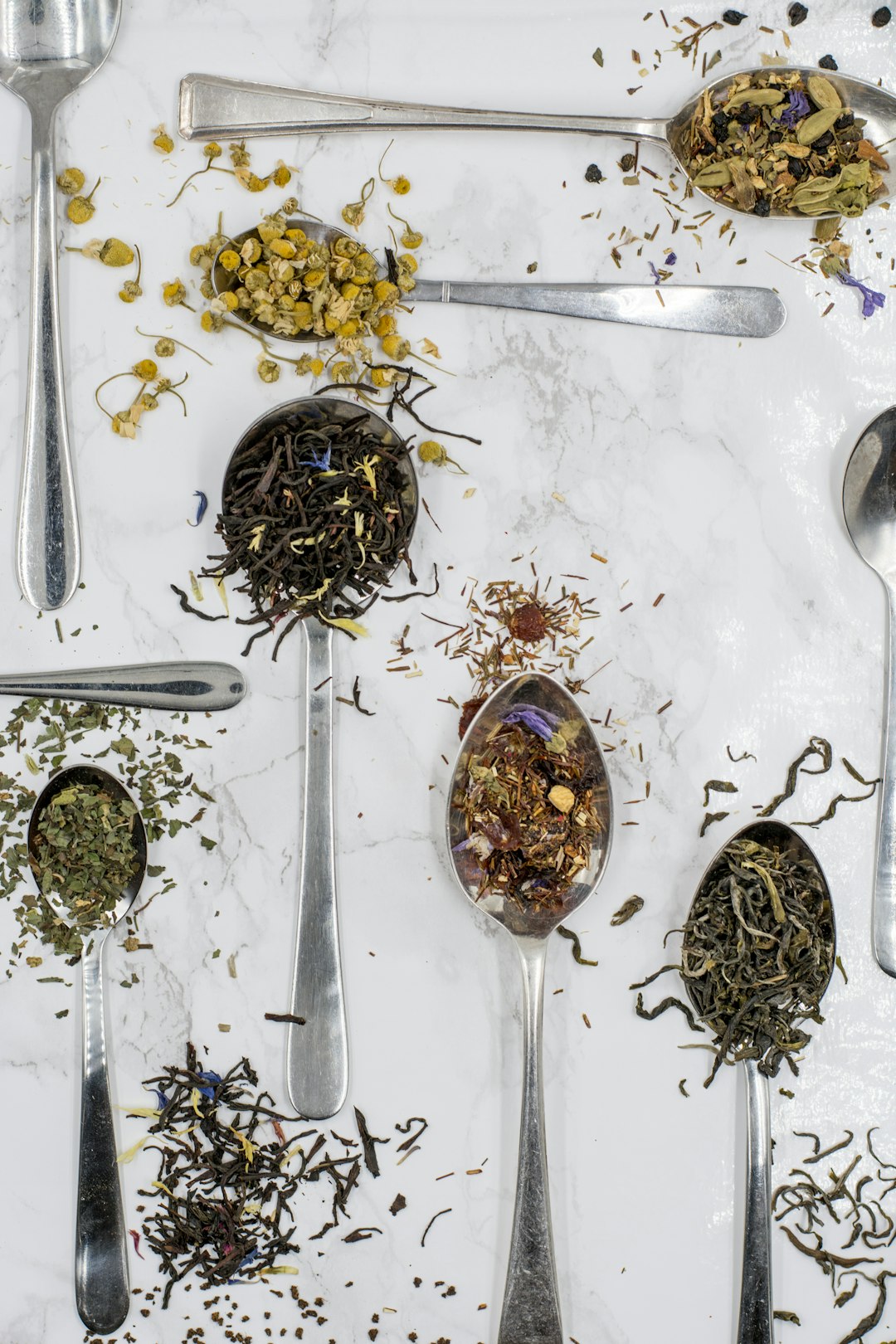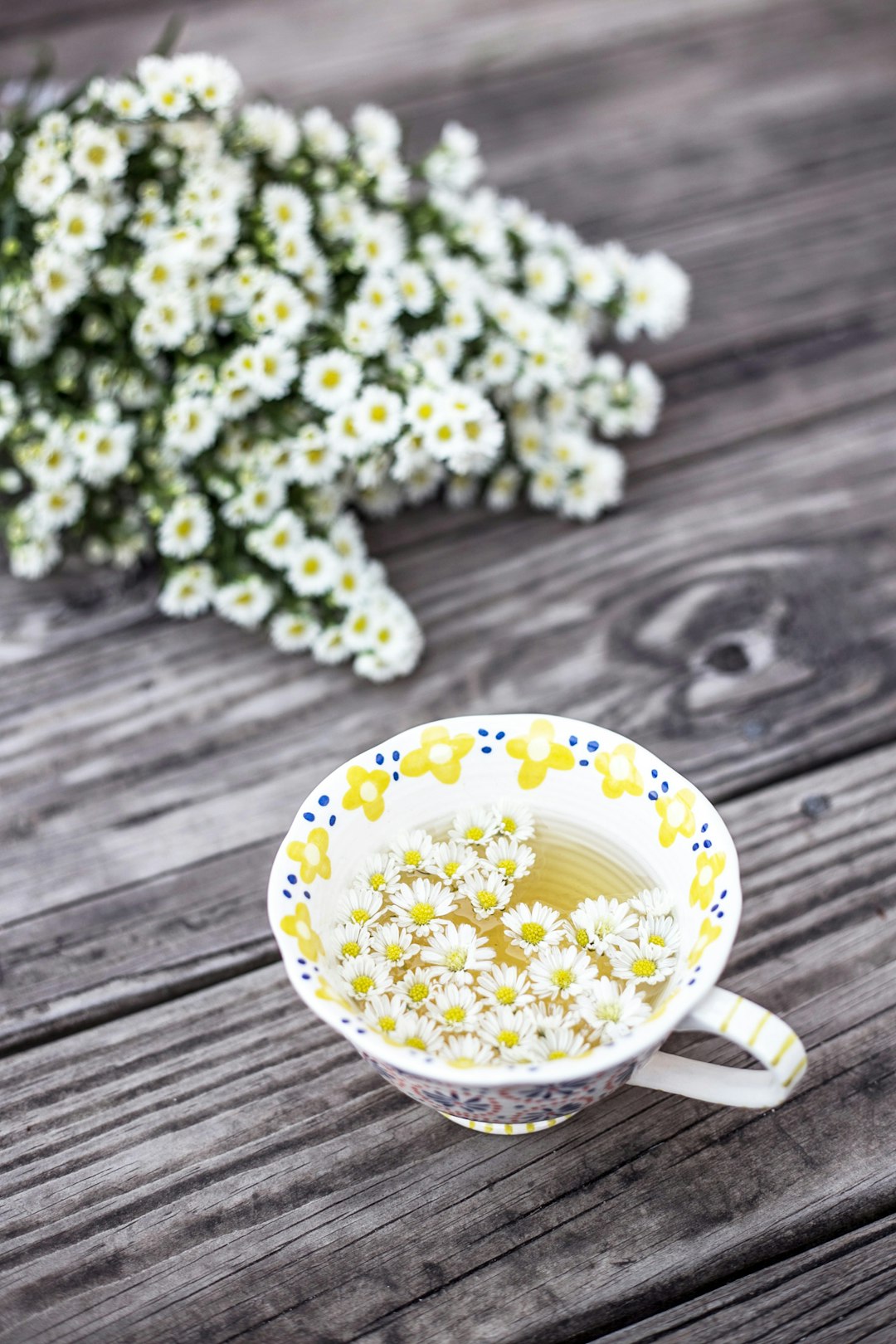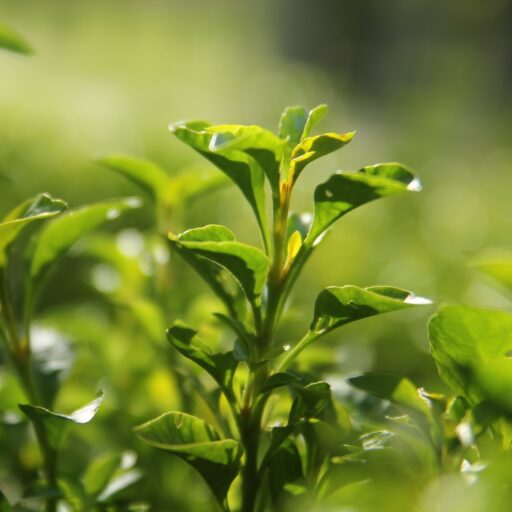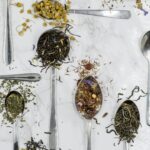Support our educational content for free when you purchase through links on our site. Learn more
Why Isn’t Tea Grown in the US? 7 Reasons You Might Be Surprised By [2024] 🍵
Have you ever wondered why you don’t see sprawling tea plantations across the American landscape? We do, too! It’s a question that’s puzzled tea lovers for generations. While the US imports over 99% of its tea, there’s a fascinating story behind why we don’t grow more of it ourselves. It’s not just about the climate, though that plays a big part. It’s a combination of historical factors, economic realities, and the challenges of cultivating a delicate plant in a diverse landscape. We’ll explore these reasons in detail, uncovering the surprising truth behind why tea is a rare and precious commodity in the US. We’ll also look at the future of tea in the US, and what you can do to support the growing movement of locally-grown tea.
Key Takeaways
- The US climate is not ideal for growing tea. Camellia sinensis, the plant that true tea comes from, is a subtropical plant that needs a warm, humid climate with plenty of rainfall. Most of the US doesn’t have the right climate for tea.
- The US has only one true tea farm. It’s located in South Carolina and produces a small amount of tea each year.
- Growing tea in the US is a challenging endeavor. The climate is not ideal, and the cost of production is high. However, there are a few dedicated tea farmers who are committed to producing high-quality tea in the US. These farmers are working to overcome the challenges of growing tea in the US, and they are helping to create a small but growing tea industry in the country.
- The future of tea in the US is bright. Tea consumption is on the rise, and there is growing interest in locally-grown tea. This is due to a number of factors, including the growing popularity of tea, the growing interest in locally-sourced food and beverages, and the growing awareness of the environmental impact of tea production.
👉 Shop Tea Products on:
- Charleston Tea Plantation: Amazon | Walmart | Charleston Tea Plantation Official Website
- Big Island Tea Company: Amazon | Walmart | Big Island Tea Company Official Website
- The Republic of Tea: Amazon | Walmart | The Republic of Tea Official Website
Table of Contents
- Quick Tips and Facts
- The History of Tea in the US: A Tale of Two Teas
- Why Tea Doesn’t Thrive in Most of the US: A Climate Conundrum
- The Tea-Growing Regions of the US: A Rare and Precious Commodity
- The Challenges of Growing Tea in the US: A Balancing Act
- The Future of Tea in the US: A Growing Trend
- Conclusion
- Recommended Links
- FAQ
- Reference Links
Quick Tips and Facts
Did you know that the US imports over 99% of its tea? 🤯 That’s right, the vast majority of the tea we enjoy comes from other countries, primarily China, India, and Kenya. While you might think that’s because we don’t have the right climate for tea, it’s actually a bit more complicated than that.
Here are a few quick facts about tea in the US:
- Tea is a relatively new crop in the US. It was introduced by European settlers in the mid-1600s, but it didn’t really take off until the late 1800s.
- The US has only one true tea farm. It’s located in South Carolina and produces a small amount of tea each year.
- The US is a major consumer of tea. We drink more tea than any other country in the world, except for China and India.
- The US is a major importer of tea. We import more tea than any other country in the world.
So, why isn’t tea grown more widely in the US? It’s a combination of factors, including climate, cost, and tradition. Let’s explore these factors in more detail.
The History of Tea in the US: A Tale of Two Teas

The story of tea in the US is a fascinating one, filled with twists and turns. It’s a story of two teas: true tea (Camellia sinensis) and herbal tea (tisanes).
True tea is the kind of tea that comes from the Camellia sinensis plant. It’s the tea that we’re most familiar with, including black tea, green tea, white tea, and oolong tea. Herbal tea, on the other hand, is made from a variety of herbs, flowers, and spices. It’s not technically tea, but it’s often referred to as tea because it’s brewed and consumed in a similar way.
The history of true tea in the US is a story of both success and failure. Tea was introduced to the US by European settlers in the mid-1600s. It was initially viewed with suspicion, as it was associated with the British. But, as the colonies grew, tea became more popular. By the late 1800s, tea was a staple beverage in most American households.
The Boston Tea Party was a pivotal moment in the history of tea in the US. It was a protest against the British government’s high taxes on tea. The protest led to the American Revolution, and it also led to a decline in tea consumption in the US.
After the Revolution, tea trade flourished again. American merchants began importing tea from China, and tea consumption continued to grow throughout the 1800s. In the early 1900s, two major innovations changed the way Americans consumed tea: iced tea and tea bags. Iced tea was invented in 1904 at the St. Louis World’s Fair, and tea bags were invented in 1908 by Thomas Sullivan. These innovations made tea more convenient and accessible, and they helped to fuel the growth of tea consumption in the US.
During World War I and World War II, tea consumption declined again. This was due to trade disruptions with China and Japan. After the wars, tea consumption resumed, and it has continued to grow ever since.
The history of herbal tea in the US is a bit different. Herbal teas have been used for centuries for their medicinal properties. They were often used by Native Americans and early settlers to treat a variety of ailments. Herbal teas became more popular in the 1960s and 1970s, as people became more interested in natural remedies.
Today, herbal tea is a popular beverage in the US. It’s often seen as a healthy and refreshing alternative to true tea. There are many different types of herbal teas available, and they come in a wide variety of flavors.
The history of tea in the US is a story of both tradition and innovation. It’s a story of how a beverage from another culture became a staple in American life. It’s also a story of how Americans have adapted tea to their own tastes and preferences.
Why Tea Doesn’t Thrive in Most of the US: A Climate Conundrum
The climate in most of the US is simply not suitable for growing true tea. Camellia sinensis, the plant that true tea comes from, is a subtropical plant. It needs a warm, humid climate with plenty of rainfall. It also needs a specific type of soil that is well-drained and rich in organic matter.
Most of the US doesn’t have the right climate for tea. The northern states are too cold, and the western states are too dry. The southern states are more suitable, but even there, the climate can be too hot and humid for tea.
Here are some of the specific climate challenges that tea faces in the US:
Temperature
- Tea plants are sensitive to cold temperatures. They can’t survive temperatures below 20 degrees Fahrenheit for extended periods. This means that tea can only be grown in areas with mild winters.
- Tea plants need warm temperatures to grow. They thrive in temperatures between 60 and 80 degrees Fahrenheit. This means that tea can only be grown in areas with long, warm summers.
Rainfall
- Tea plants need plenty of rainfall. They need at least 40 inches of rain per year. This means that tea can only be grown in areas with high rainfall.
- Tea plants need well-drained soil. They can’t tolerate waterlogged soil. This means that tea can only be grown in areas with well-drained soil.
Soil
- Tea plants need a specific type of soil. They need soil that is well-drained and rich in organic matter. This means that tea can only be grown in areas with the right type of soil.
The climate in the US is simply not ideal for growing tea. This is why most of the tea we drink is imported from other countries.
The Tea-Growing Regions of the US: A Rare and Precious Commodity
While the US doesn’t have a thriving tea industry like China or India, there are a few small pockets of tea production scattered across the country. These regions are often characterized by unique microclimates that allow tea to flourish.
1. South Carolina
- The only true tea farm in the US is located in South Carolina. It’s called Charleston Tea Plantation, and it’s been in operation since 1987. The plantation grows a variety of black teas, green teas, and oolongs.
- Charleston Tea Plantation is a popular tourist destination. Visitors can take a tour of the plantation, learn about the history of tea in the US, and sample different types of tea.
- The tea grown at Charleston Tea Plantation is of good quality, but it’s not considered to be premium. This is because the climate in South Carolina is not ideal for growing tea. The summers are too hot and humid, and the winters are too mild. As a result, the tea produced at Charleston Tea Plantation is often less flavorful and less aromatic than tea from other countries.
2. Hawaii
- Hawaii has a unique microclimate that is suitable for growing tea. The islands are located in the tropics, and they receive plenty of rainfall. The volcanic soil is also well-drained and rich in organic matter.
- There are a few small tea farms in Hawaii. These farms produce a variety of teas, including black teas, green teas, and oolongs.
- The tea grown in Hawaii is of high quality. This is because the climate and soil are ideal for growing tea. The tea produced in Hawaii is often more flavorful and more aromatic than tea from other countries.
3. California
- California has a few small tea farms. These farms are located in the northern part of the state, where the climate is more temperate.
- The tea grown in California is of good quality. However, it’s not as widely available as tea from other countries.
4. Other Regions
- There are a few other small tea farms scattered across the US. These farms are often located in areas with unique microclimates that allow tea to flourish.
- The tea grown at these farms is often of good quality. However, it’s not as widely available as tea from other countries.
Growing tea in the US is a challenging endeavor. The climate is not ideal, and the cost of production is high. However, there are a few dedicated tea farmers who are committed to producing high-quality tea in the US. These farmers are working to overcome the challenges of growing tea in the US, and they are helping to create a small but growing tea industry in the country.
The Challenges of Growing Tea in the US: A Balancing Act
Growing tea in the US is a balancing act. It’s a delicate dance between the climate, the soil, and the tea plant. Here are some of the challenges that tea farmers face in the US:
Climate
- The climate in the US is not ideal for growing tea. As we discussed earlier, the climate in most of the US is too cold, too dry, or too hot and humid for tea. This means that tea farmers have to find ways to create a microclimate that is suitable for tea.
- Tea farmers in the US often have to use greenhouses or other protective structures to grow tea. This can be expensive, and it can also limit the amount of tea that can be produced.
- Climate change is also a challenge for tea farmers in the US. As the climate changes, the growing season for tea may become shorter, and the weather may become more unpredictable. This could make it more difficult to grow tea in the US.
Soil
- The soil in the US is not always ideal for growing tea. Tea plants need well-drained soil that is rich in organic matter. This type of soil is not always found in the US.
- Tea farmers in the US often have to amend the soil to make it more suitable for growing tea. This can be expensive, and it can also take time.
Pests and Diseases
- Tea plants are susceptible to a variety of pests and diseases. These pests and diseases can damage the tea plants and reduce the quality of the tea.
- Tea farmers in the US have to be vigilant about controlling pests and diseases. This can be a time-consuming and expensive process.
Labor
- Finding skilled labor to grow and harvest tea can be a challenge in the US. Tea production is a labor-intensive process, and it requires specialized skills.
- Tea farmers in the US often have to pay higher wages than tea farmers in other countries. This can make it more expensive to produce tea in the US.
Despite these challenges, there are a few dedicated tea farmers who are committed to producing high-quality tea in the US. These farmers are working to overcome the challenges of growing tea in the US, and they are helping to create a small but growing tea industry in the country.
The Future of Tea in the US: A Growing Trend
The future of tea in the US is bright. Tea consumption is on the rise, and there is growing interest in locally-grown tea. This is due to a number of factors, including:
- The growing popularity of tea. Tea is becoming more popular in the US, as people are looking for healthier and more flavorful beverage options.
- The growing interest in locally-sourced food and beverages. People are increasingly interested in knowing where their food and beverages come from. This is driving demand for locally-grown tea.
- The growing awareness of the environmental impact of tea production. People are becoming more aware of the environmental impact of tea production, and they are looking for tea that is grown sustainably.
There are a number of things that can be done to support the growth of the tea industry in the US. These include:
- Investing in research and development. More research is needed to develop tea varieties that are better suited to the US climate.
- Providing financial assistance to tea farmers. Financial assistance can help tea farmers to overcome the challenges of growing tea in the US.
- Educating consumers about the benefits of locally-grown tea. Consumers need to be educated about the benefits of locally-grown tea, such as its freshness, flavor, and sustainability.
The future of tea in the US is bright. With the right support, the tea industry in the US can continue to grow and flourish.
Conclusion

So, while the US might not be the tea-growing powerhouse that China or India is, it’s not entirely barren of tea farms. The unique microclimates of certain regions, like South Carolina and Hawaii, allow for a small but dedicated tea industry to thrive. However, the challenges are real, and the future of tea in the US depends on a combination of factors: climate adaptation, consumer awareness, and continued investment in research and development.
The journey of tea in the US is a fascinating one, filled with history, innovation, and a growing appreciation for the unique flavors and benefits of this ancient beverage.
Recommended Links
👉 Shop Tea Products on:
- Charleston Tea Plantation: Amazon | Walmart | Charleston Tea Plantation Official Website
- Big Island Tea Company: Amazon | Walmart | Big Island Tea Company Official Website
- The Republic of Tea: Amazon | Walmart | The Republic of Tea Official Website
Books on Tea:
- The Tea Lover’s Companion: A Guide to Tea Varieties, Brewing, and History by James Norwood Pratt: Amazon
- The World Atlas of Tea by Mary Lou Heiss and Robert Heiss: Amazon
FAQ

Why is tea not grown in America?
The climate in most of the US is not suitable for growing tea. Camellia sinensis, the plant that true tea comes from, is a subtropical plant that needs a warm, humid climate with plenty of rainfall. Most of the US doesn’t have the right climate for tea.
Can you grow tea in the USA?
Yes, you can grow tea in the US, but it’s challenging. The climate is not ideal, and the cost of production is high. However, there are a few dedicated tea farmers who are committed to producing high-quality tea in the US. These farmers are working to overcome the challenges of growing tea in the US, and they are helping to create a small but growing tea industry in the country.
How far north can tea be grown?
Tea can be grown as far north as the southern US. The northern states are too cold for tea, and the western states are too dry. The southern states are more suitable, but even there, the climate can be too hot and humid for tea.
What is the only state in the US that grows tea?
South Carolina is the only state in the US that has a true tea farm. It’s called Charleston Tea Plantation, and it’s been in operation since 1987. The plantation grows a variety of black teas, green teas, and oolongs.
Read more about “Is Black Tea Grown in the US? … ☕️”
What about other tea-growing regions in the US?
While South Carolina is the only state with a true tea farm, other regions like Hawaii and California have small-scale tea farms. However, the production is limited and not as widespread as in other tea-producing countries.
Read more about “How Long Does It Really Take to Grow Tea? Discover 10 Essential Insights … ☕️”
Reference Links
- Charleston Tea Plantation: Charleston Tea Plantation Official Website
- Big Island Tea Company: Big Island Tea Company Official Website
- The Republic of Tea: The Republic of Tea Official Website
- Why Don’t We Grow Tea in the US? – Shang Tea: Shang Tea Blog
- Where is Green Tea Grown? Discover the Top 12 Regions in 2024! 🌍: Growing Teas™
We hope you enjoyed this deep dive into the world of tea in the US! We’re always learning and growing, and we’d love to hear your thoughts and questions. Let us know what you’d like to learn more about in the comments below! 🍵



